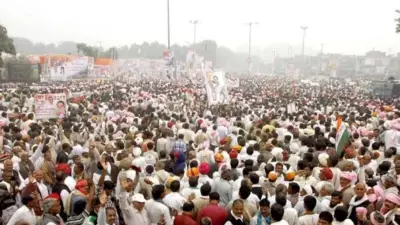
In an unprecedented move to tackle Delhi's severe air pollution crisis, the first aircraft for a landmark cloud seeding trial has taken off from Kanpur, marking the beginning of a revolutionary weather modification experiment in the national capital region.
The specially equipped aircraft departed from Kanpur's airport, carrying advanced cloud seeding equipment and scientific instruments for what experts are calling a potential game-changer in India's fight against toxic air quality. This pioneering initiative is being spearheaded by IIT-Kanput in collaboration with government authorities.
The Science Behind the Solution
Cloud seeding, technically known as artificial rain induction, involves dispersing substances like silver iodide or salt particles into clouds to stimulate precipitation. The process aims to create artificial rainfall that can help wash away hazardous pollutants from Delhi's atmosphere, particularly during the winter months when air quality reaches emergency levels.
The current trial focuses on the Burari area in North Delhi, identified as a strategic location for testing the effectiveness of this technology in urban conditions. Scientists from IIT-Kanpur have been monitoring weather patterns and cloud formations to identify the optimal conditions for seeding operations.
A Multi-Phase Approach to Cleaner Air
The cloud seeding project follows a carefully structured timeline:
- Phase 1: Initial test flights and equipment calibration
- Phase 2: Limited-scale seeding operations in targeted areas
- Phase 3: Comprehensive analysis of results and environmental impact
- Phase 4: Potential scaling for broader implementation during peak pollution season
This initiative represents India's most ambitious attempt to use weather modification technology specifically for pollution control in a metropolitan area. Previous cloud seeding efforts in the country have primarily focused on addressing drought conditions or enhancing rainfall in water-scarce regions.
Expert Insights and Environmental Implications
Environmental scientists and atmospheric researchers are closely monitoring the trial, which could provide valuable data on the feasibility of large-scale cloud seeding as a pollution mitigation strategy. While the technology has shown promise in other countries, its application specifically for urban air quality management in India's unique climatic conditions represents new territory.
The success of this trial could pave the way for more extensive implementation during Delhi's notorious winter pollution season, when the city often experiences air quality indexes that far exceed safe limits. However, experts caution that cloud seeding should be viewed as a supplementary measure rather than a standalone solution to the complex problem of urban air pollution.
As Delhi continues to battle one of the world's most severe air pollution crises, this cloud seeding experiment represents a significant step toward exploring innovative technological solutions to safeguard public health and improve environmental conditions for millions of residents.





